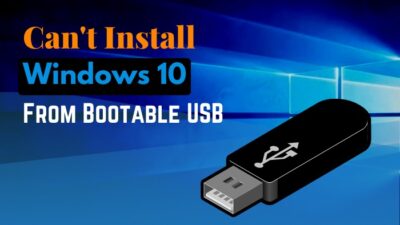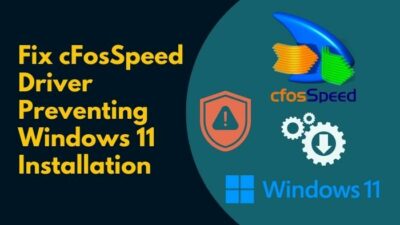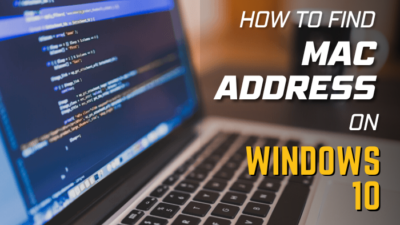After putting together your shiny brand new PC, how frustrating it must be when you see that your graphics card has not been detected.
Luckily, you’ve stumbled upon this article which explains exactly what you must do in this type of situation.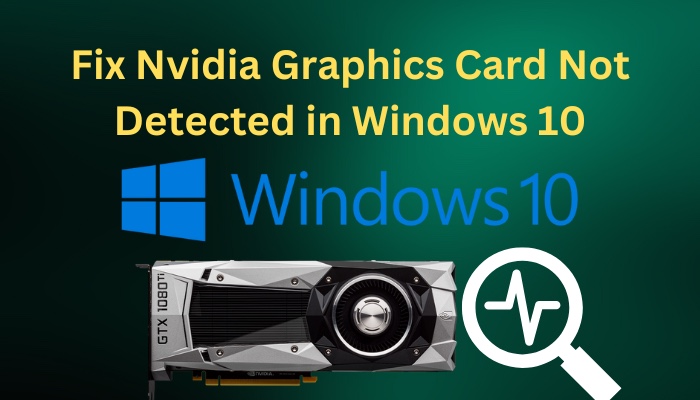
Here I’ll provide all the steps that will clearly fix any Nvidia graphics card detection errors in Windows 10. Let’s begin!
How to Solve Nvidia GPU Not Detected in Windows 10
To fix the Nvidia graphics card not detected by Windows 10, check the hidden devices from the Device Manager and enable the graphics driver. Also, updating the graphics card driver, disabling PCI Express and resetting & updating the BIOS can solve the issue.
These methods can also fix Nvidia Control Panel missing issue along with solving the graphics card detection error.
But before you troubleshoot, check if the GPU is working properly and make sure your CPU is compatible with the GPU. Also, you should test if the GPU is failing.
Now follow the instructions below to know what to do when Windows doesn’t detect the Nvidia driver.
Here are the steps to fix Nvidia discrete graphics not detected by Windows 10:
Sometimes, the Nvidia GPU doesn’t show up because it’s hidden, and you need to unhide it from the Windows Device Manager.
Here’s how to check hidden devices for the Nvidia driver:
- Right-click on the Windows icon and select Device Manager.

- Click on View from the top bar and check the Show hidden devices option.
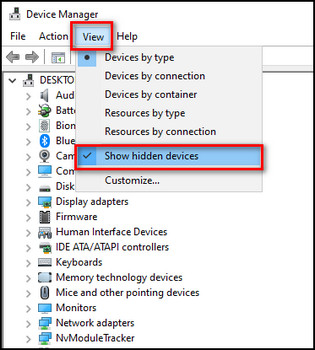
- Select Action and choose Scan for hardware changes.
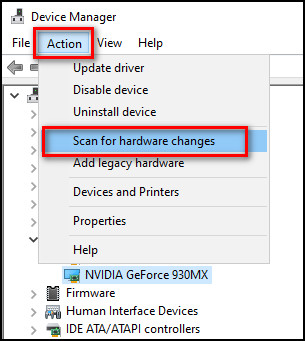
Expand the Display adapters section, and if you see the Nvidia driver, congratulations! You’ve successfully fixed the issue. But if you don’t see the driver, don’t worry; there are plenty more ways to enable the Nvidia GPU.
Speaking of enabling graphics drivers, in the following section, I’ve explained how to enable yours.
2. Enable Nvidia Driver
In case your discrete graphics card is appearing in the Device Manager, but Windows is still unable to detect the driver, most likely because the driver has been disabled.
Here’s the process to enable the Nvidia graphics driver:
- Press the Windows + R keys on the keyboard to open the Run program.
- Type devmgmt.msc and click on OK.
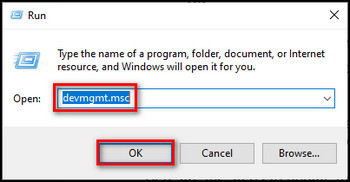
- Expand Display adapters, right-click on your Nvidia driver and choose Properties.
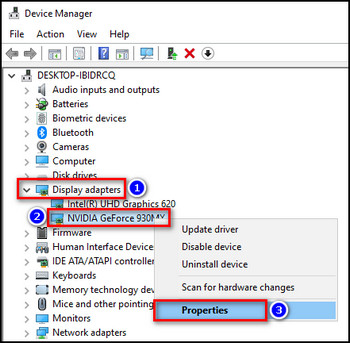
- Go to the Driver tab, click the Enable Device button if it’s disabled and select OK.
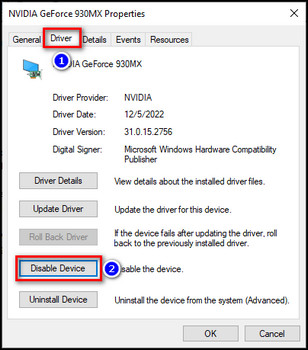
3. Update Graphics Card to the Latest Version
An outdated graphics driver can cause detection issues. Check and make sure your Nvidia GPU is up to date.
Update the driver from the Device Manager, but if it’s unavailable in the Display adapters, download the latest driver installation file from the official Nvidia website.
Here are the steps to update the Nvidia graphics card:
Update GPU from Device Manager
- Right-click on the Windows icon and choose Device Manager.

- Open the Display adapters section, right-click on your Nvidia graphics driver and choose Update driver.
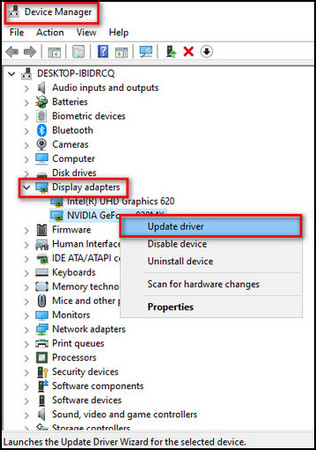
- Select Search automatically for drivers.
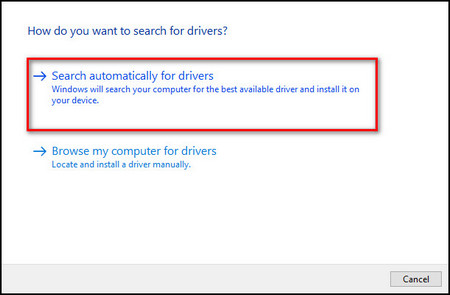
Check for Graphics Driver Upgrade in Windows Updates
- Click on the Windows icon and choose Settings.
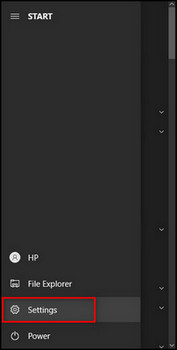
- Select Update & Security.
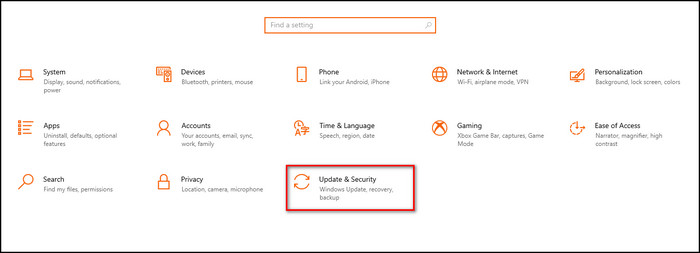
- Click on View optional updates.
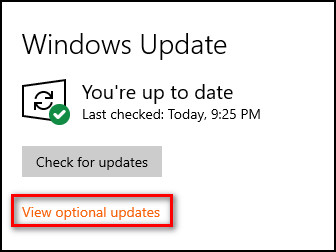
- Expand Driver updates.
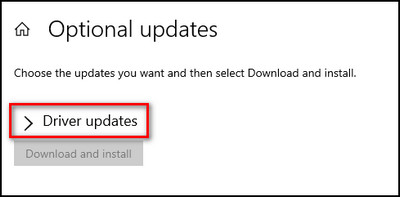
- Select the graphics driver if any upgrade is available, and click Download and install.
Update Nvidia Graphics Card Manually
- Open the official Nvidia Driver Download page.
- Provide what type of Nvidia driver you’ve installed on your computer and click on Search.
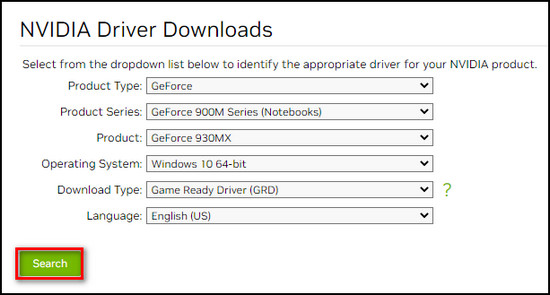
- Select Download and confirm the driver file download process.
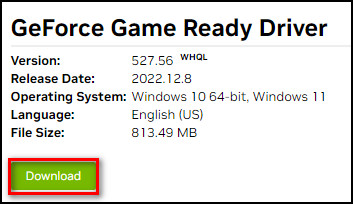
- Double-click on the downloaded setup file to install your Nvidia driver to the latest version.
Use GeForce Experience to Update Driver
- Go to the GeForce Experience Download page.
- Click on Download Now.
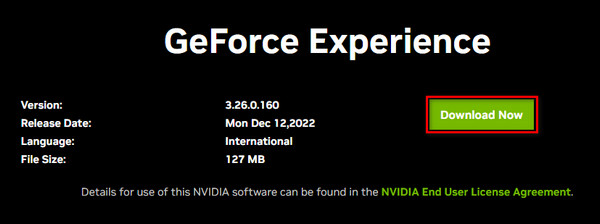
- Open the downloaded GeForce Experience setup file and go through the installation process.
- Launch the Geforce Experience app when installed.
- Move to the Drivers tab and select Check For Updates.
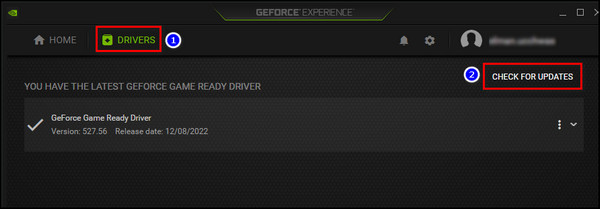
- Download and install the latest version in case an update is available.
4. Disable PCI Express from CMD
PCI Express or PCIe is the motherboard interface for graphics cards, SSDs, hard disks and other hardware components and disabling it can fix the issue you are facing.
Here’s how to disable PCI Express:
- Click on the Search icon on the Taskbar.
- Search for Command Prompt and run it as administrator.
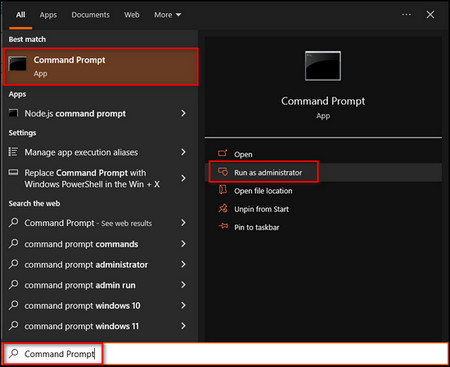
- Type in bcdedit /set pciexpress forcedisable and press Enter.

When the command finishes, restart your computer and check whether Windows finds your graphics driver.
5. Enable Discrete GPU in BIOS
If your computer has integrated and discrete graphics drivers, Windows sometimes has trouble detecting both unless you enter BIOS or UEFI in Windows, which is the same for Windows 10 & 11 and enable the discrete graphics driver from there.
Here’s the process to enable discrete GPU in BIOS:
- Enter the BIOS mode.
- Select Chipset, then dGPU Configuration.
- Turn on the dGPU.
- Save & exit BIOS.
6. Update BIOS
Outdated BIOS can have bugs and malware attacks that stop Windows from detecting your graphics card.
But updating the BIOS can improve the performance of your device along with fixing the issue, and depending on the motherboard, you can also update BIOS without the CPU.
Here’s the process for updating the BIOS:
- Right-click on the Windows icon and choose Run.
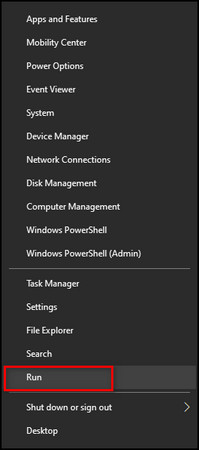
- Type msinfo32 in the text field and press Enter.
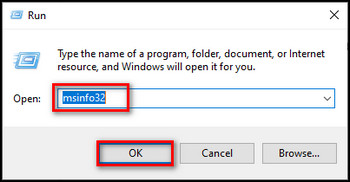
- Check your computer manufacturer information, BIOS Mode, and BIOS Version/Date.
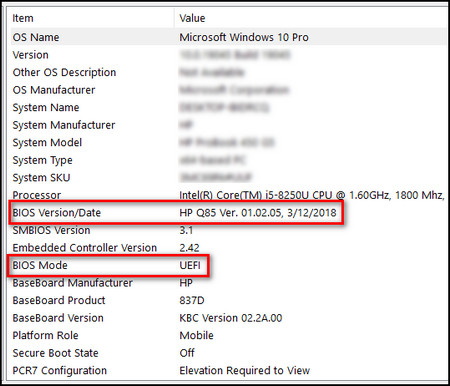
- Go to the manufacturer’s official website and look for the latest BIOS version from the Download or Support section.
- Download the BIOS setup file and go through the installation process.
Now restart your PC and check if Windows still has problems detecting your Nvidia graphics driver. In case the issue remains, reset the BIOS to the default settings.
7. Reset BIOS to Default
The wrong BIOS configuration can prevent Windows from identifying your graphics driver. However, simply resetting the BIOS will fix the issue.
Here are the steps to reset BIOS to default:
- Restart your device and boot into BIOS mode.
- Look for an option such as Setups Default, Factory Default, Reset to Default or something similar.
- Select Load Setup Defaults and press Enter.
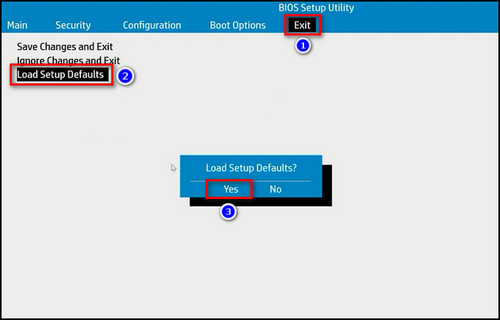
- Save and exit the BIOS menu.
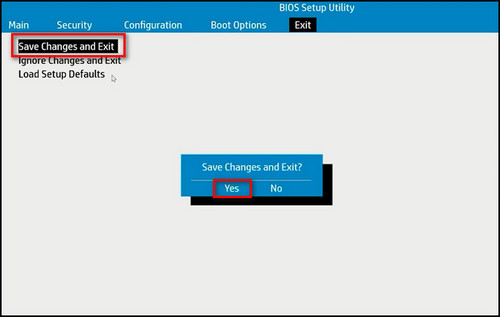
8. Update Windows drivers
Updating drivers eliminates bugs and glitches in your PC that can cause the graphics card detection problem. Regularly check for updates for your drivers and download & install them when available.
Here’s how you can check for driver updates:
- Select the Windows icon and click on Settings.

- Go to the Windows Update tab and choose Update & Security.

- Click on the Check for updates button.
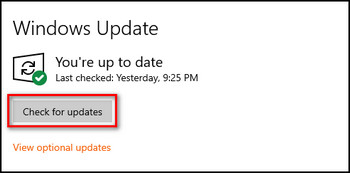
Windows will download and install updates automatically in case they are available.
9. Uninstall Recent Updates
Although keeping the Windows drivers up to date is a good practice, sometimes a corrupted file in a recent update can cause problems like the one you are facing.
If you are getting the Nvidia GPU detection issue after a recent update, you should uninstall it.
Here’s the process to uninstall recent updates:
- Go to Update & Security from Windows Settings.

- Choose View update history.
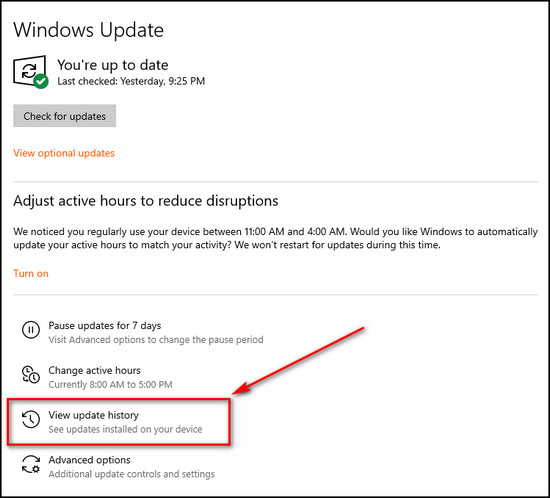
- Select Uninstall updates.
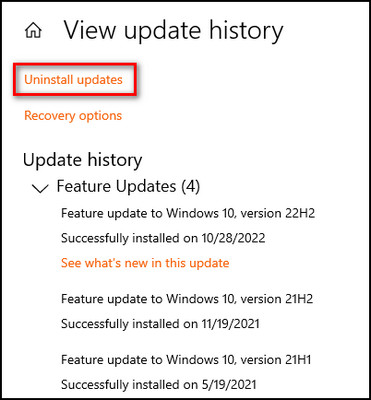
- Choose the latest update you’ve installed and click on the Uninstall button.
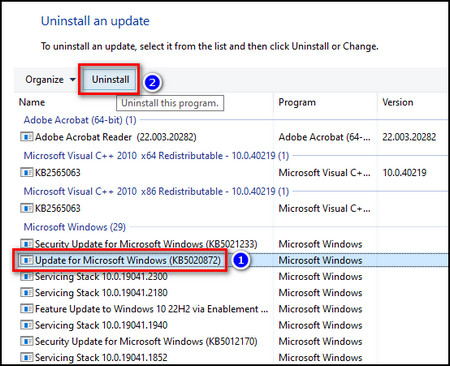
10. Check the Graphics Card Slot
Open the back cover of your PC and check & make sure the graphics card is properly inserted into its slot. If it’s loosely connected, Windows will have trouble detecting the driver.
If the problem persists, it’s most likely because the motherboard is not detecting the GPU, and you should check the graphics card installation process & your PSU.
FAQs
Why is my NVIDIA graphics card not detected?
Your Nvidia graphics card is not detected because your GPU is not enabled, you are using an outdated graphics driver, using the wrong BIOS settings, or your BIOS version is old.
How do I enable NVIDIA graphics cards in Windows 10?
To enable Nvidia graphics cards in Windows 10, open Device Manager, expand Display adapters, right-click on your Nvidia graphics driver and choose Enable device.
How do I force my graphics card to enable it?
You can force your graphics card to enable it from the Graphics settings. Simply go to Settings > System > Display > Graphics settings, choose the app for which you want to use the graphics card and select High performance.
Final Thoughts
After going through the steps in this article, your Windows 10 computer won’t have any further problems identifying your Nvidia graphics card.
So, which solution have you found most helpful to solve your issue? Let us know in the comments below.

